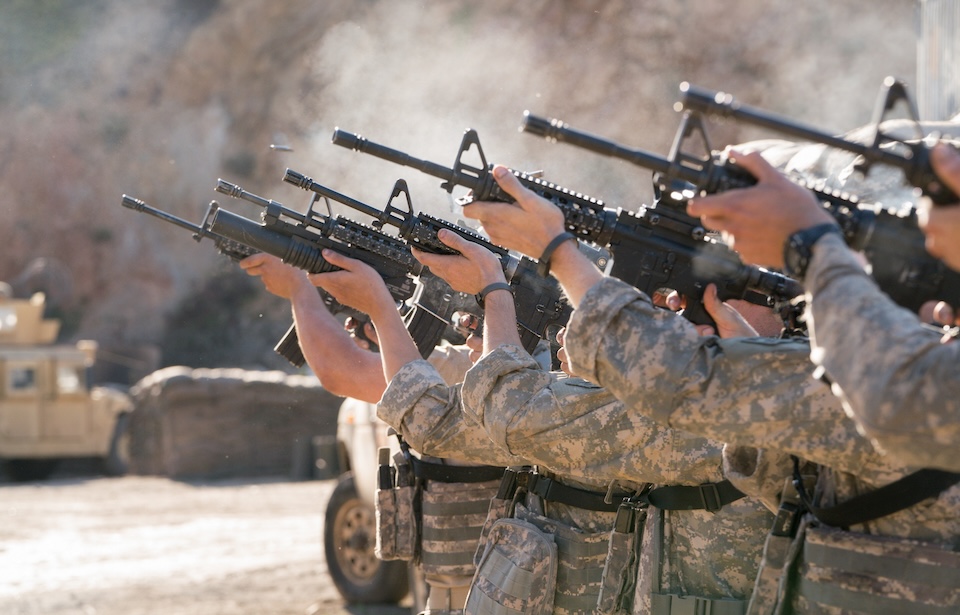On October 3, 2009, more than 300 Taliban fighters launched a planned attack on Combat Outpost (COP) Keating, a remote U.S. Army base in Kamdesh, Afghanistan. Around 50 soldiers from Black Knight Troop (3-61 Cavalry Regiment, 4th Brigade Combat Team, 4th Infantry Division) held their ground, even though they were greatly outnumbered and facing extreme pressure. Their courage was clear, but the fight came at a heavy price—eight soldiers were killed, and 22 others were injured.
Kamdesh wasn’t a good location for a combat outpost
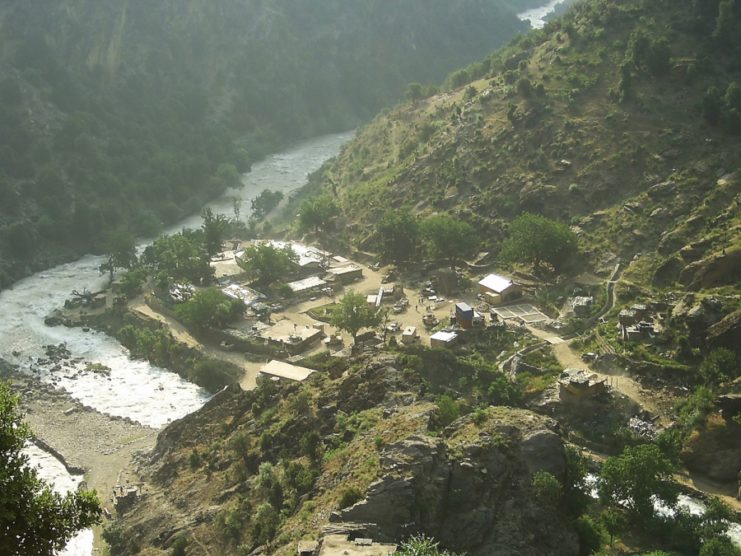
Combat Outpost (COP) Keating was set up in 2006 in Afghanistan’s Nuristan province, deep in the Landai Sin Valley. Many soldiers believed the base’s location was a major weakness—it sat at the bottom of steep mountains, making it an easy target for attacks from above. The only road nearby was rugged and mainly used by Afghan troops, so helicopters had to fly in supplies at night, adding to the risk.
Even with these dangers, the base was placed there because of its strategic importance. It sat near the border with Pakistan, in an area where three valley systems came together. This region was a key route used by anti-coalition forces to move weapons and fighters from Pakistan into Afghanistan. COP Keating was meant to help disrupt those movements.
A big part of the base’s mission was building trust with local villagers by helping with development projects—a key part of the U.S. military’s counterinsurgency plan. But Taliban activity in the region stayed high. After three years, the outpost was seen as too dangerous and no longer strategically useful. In August 2009, plans were made to shut it down.
Still, by that time, attacks were happening more often. In the first nine months of 2009 alone, there were 212 reported attacks on the outpost, including sniper and mortar fire. Efforts to close the base were delayed by poor road conditions and political disagreements between U.S. President Barack Obama and Afghan President Hamid Karzai. Those delays left the soldiers of Black Knight Troop stuck in a dangerous and isolated position—setting the stage for the devastating battle that would follow.
Battle of Kamdesh, minute by minute
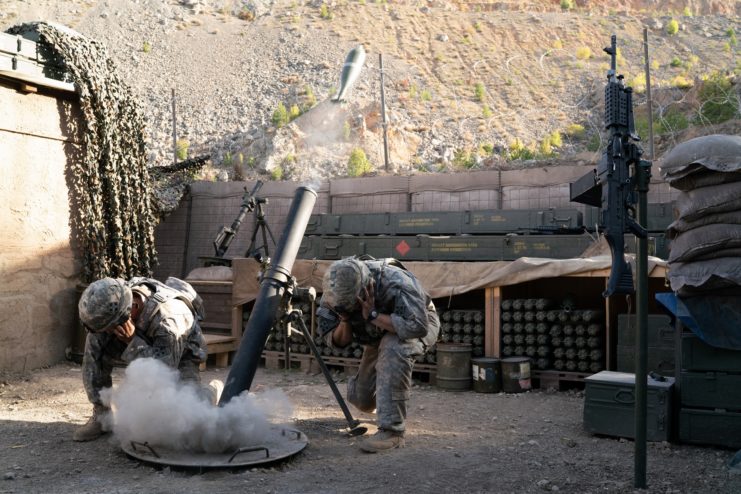
At around 3:00 AM on October 3, 2009, 300 Taliban-backed insurgents arrived in Kamdesh and asked that locals evacuate. After they finished their morning prayers, they opened fire on COP Keating with Soviet-era B-10 recoilless rifles, DShK heavy machine guns, rocket-propelled grenades (RPGs) and mortar fire.
The insurgents had extensive knowledge of the base’s layout and weaponry, and they first targeted its most powerful weapon: the 120 mm mortar. As fighters descended upon COP Keating, others targeted nearby Observation Post Fritsche. At 6:03 AM, the post sent out an urgent message, “FRITSCHE AND KEATING IN HEAVY CONTACT.”
Within two minutes, the first US soldier was killed; Pfc. Kevin Thomson was shot in the face while defending the northernmost mortar pit. Not long after, Sgt. Josh Kirk was struck by RPG shrapnel while preparing to fire an AT4 anti-tank rocket. This was followed by a sniper’s bullet to the head.
The US troops tried to return fire from armored Humvees equipped with machine guns, but were overwhelmed as their ammunition ran low. Sgt. Vernon Martin was struck by a bullet and, shortly after, an RPG knocked a .50 caliber machine gun off its mount, spraying shrapnel and inflicting him with additional injuries.
Martin and another soldier were near a Humvee when they were joined by Sgt. Justin Gallegos and Spc. Stephen Mace. The four got into the vehicle as Spc. Ty Carter ran through a barrage of bullets with ammunition for the Humvee’s M240 machine gun, which was no longer operational. Without any way of fending off the ensuing Taliban forces, COP Keating was left even more vulnerable.
Spc. Michael Scusa was killed by a bullet to the neck while running from the barracks to defend another position. Hoping to cover the men trapped in the Humvee, Staff Sgt. Clinton Romesha began firing his M48 machine gun at the enemy, but was injured by the overwhelming gunfire.
Afghani guards fled as the fighting intensified
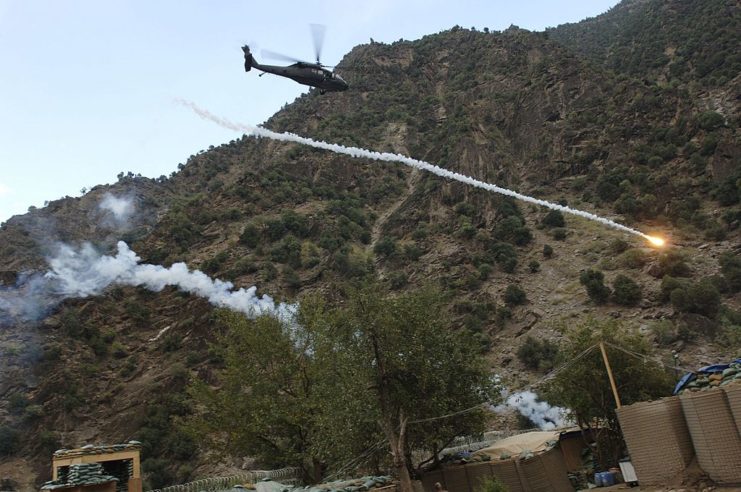
The Taliban entered the compound and set important buildings on fire. About an hour into the battle, the defenders of COP Keating retreated to secure the last two buildings as the enemy took over more of the base. With the number of Taliban fighters increasing, the remaining U.S. soldiers realized they were at risk of being completely overrun. Lt. Andrew Bundermann ordered the troops to pull back, tighten the perimeter, and focus their firepower. At the same time, Romesha rallied the soldiers with a passionate call to action, urging them to “retake this ******* camp and drive the ******* Taliban out!”
The small group launched two counterattacks. Sfc. Jonathan Hill volunteered to lead his team to the east side, while Romesha organized others to move west and reclaim the ammunition storage shed and the base’s main entrance. As their plan unfolded, Boeing AH-64 Apaches arrived and began attacking Taliban positions on the mountainside.
A final attempt to take back control of Combat Outpost Keating
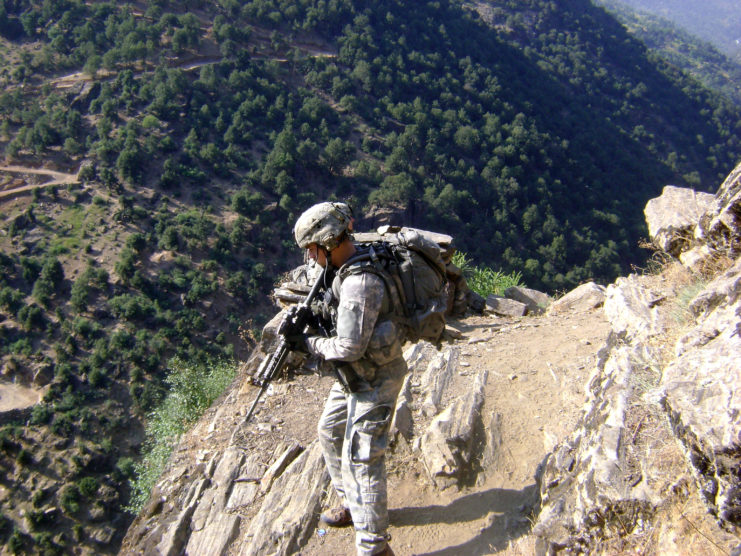
Romesha encouraged his men by saying, “We’re taking this b***h back,” as they moved toward the ammunition storage shed. They gathered grenades and launched an attack on the Shura building, a mosque where Taliban fighters were stationed. Even though they were vastly outnumbered by hundreds of enemy insurgents, the eight soldiers managed to clear the area, secure the dining hall, and strengthen the entrance to COP Keating.
American airstrikes provided crucial support, but another danger arose when a burning tree threatened the aid station, where wounded soldiers were being treated. Acting quickly, the remaining troops used a chainsaw to cut down the tree before it could cause more damage. By 12:30 PM, most of the Taliban fighters had retreated, admitting defeat.
The 1-32 Infantry Quick Reaction Force (QRF) arrived to eliminate the remaining insurgents, leading to the deaths of 150 enemy fighters during the battle. By 7:00 PM, COP Keating was fully secured. Sadly, eight American soldiers were killed, and 22 were wounded.
In the days that followed, the remaining troops were evacuated, and a Rockwell B-1 Lancer bomber destroyed the base.
Reliving what happened during the Battle of Kamdesh
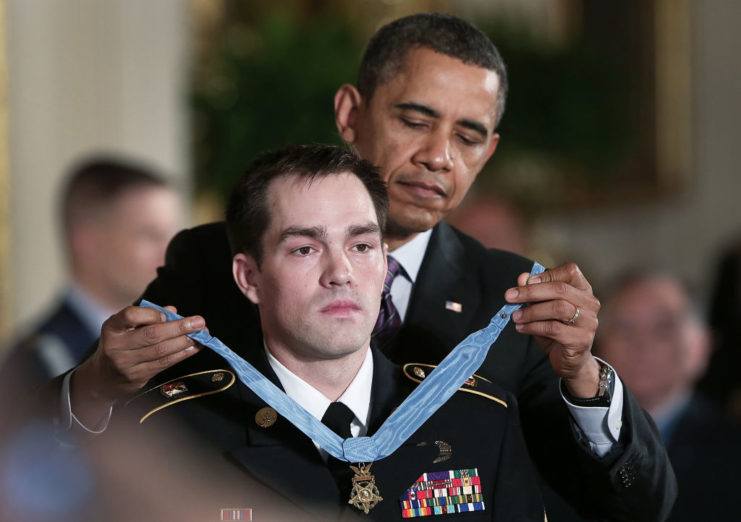
In 2013, Romesha and Carter received the Medal of Honor for their courage, bravery and leadership during the Battle of Kamdesh. Additionally, 27 Purple Hearts, nine Silver Stars, 37 Army Commendation Medals with “V” and 21 Bronze Stars were presented to others who fought. The Silver Stars awarded to Bundermann and Gallegos (the latter posthumously) were upgraded to Distinguished Service Crosses.
In 2020, a film about the attack on COP Keating was released, based on Jake Tapper’s best-selling book, The Outpost: An Untold Story of American Valor. When one of the battle’s veterans caught wind that his experience would be made into a movie, he felt concerned about how the battle would be portrayed.
Writing in an article for The New York Times, retired Lt. Col. Stoney Portis explained, “Over the years, I have learned that sharing the experience allowed many of us to put our emotions into words. That process helped us heal, but a bad rendering of the battle would leave us talking about what the movie got wrong instead of what actually happened.”
Portis reached out to director Rob Lurie, who himself is a US Army veteran and graduate of US Military Academy West Point. He and fellow veteran, retired Maj. Chris Cordova, flew to Bulgaria to visit the film’s set. “When Cordova and I arrived on set, both of us were astounded. It looked just like our outpost on the day of the battle,” Portis wrote.
In his NYT piece, the veteran described walking into the replica aid station, where Cordova burst into tears. Nearly 10 years prior, his travel companion, a physician’s assistant at COP Keating, had worked for hours treating the wounded from the battle. One of those he’d cared for was 21-year-old Mace, whom Cordova kept alive for nine hours by giving him blood transfusions from other soldiers, including himself.
More from us: Korengal Valley: Why the Region Is Nicknamed the ‘Valley of Death’
Portis described how he and Cordova felt watching The Outpost be filmed, reliving the most traumatic day of their lives. In a bizarre twist, the combat veteran realized the powerful nature of watching his story – to be a listener, instead of the speaker. As he explained, listening is one of the biggest parts of the healing process, as by “allowing soldiers to tell their story, by hearing their story, you are also part of the healing.”
